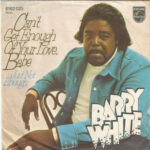While many wonder “How Long Is The Movie One Love,” this article focuses on a different kind of “one love” story: the classic Disney film, Beauty and the Beast. This animated masterpiece, while captivating, subtly portrays unhealthy relationship dynamics. Let’s dissect some key scenes and uncover the problematic behaviors often overlooked.
Gaston’s Obsessive Pursuit: Red Flag #1
Gaston’s relentless pursuit of Belle, fueled by her beauty and his narcissistic tendencies, showcases a lack of respect for her autonomy. His declaration, “I’ll have Belle for my wife, make no mistake about that,” after being rejected, highlights an obsessive and controlling mindset. Healthy relationships require mutual consent and respect, not forceful demands.
Under Pressure from Friends: A Subtle Form of Influence
Lumiere and Cogsworth, in their eagerness to break the spell, pressure both Belle and the Beast into a relationship. While seemingly harmless, their actions represent the subtle societal pressure to prioritize romantic relationships above all else. Friends should offer support and guidance, not push individuals into potentially unhealthy situations.
Isolation and Control: The Forbidden West Wing
The Beast’s imprisonment of Belle’s father and her subsequent confinement within the castle demonstrate a classic abusive tactic: isolation. By restricting her contact with the outside world, the Beast exerts control and limits her support system. Healthy relationships thrive on trust and freedom, not confinement and manipulation.
The Beast’s Anger: A Threatening Presence
The Beast’s explosive anger, manifested in threats of violence and food deprivation, creates a climate of fear and intimidation. Healthy relationships should provide a safe and supportive environment, not one filled with anger and coercion.
romanticizing abuse: The “Good Heart” Fallacy.
The Beast’s eventual transformation into a prince reinforces a dangerous narrative: that beneath the anger and abuse lies a “good heart” waiting to be unlocked. This romanticized notion can trap individuals in abusive relationships, hoping for a change that may never come. Abuse should never be tolerated or excused, regardless of the perpetrator’s perceived potential for change.
The Myth of Changing Someone: Belle’s False Hope
The Beast’s character arc suggests that Belle’s love and patience tamed his anger and transformed him. This perpetuates the harmful myth that individuals can change their abusive partners. Lasting change can only come from within, not through external pressure or sacrifice.
A Critical Look at “Happily Ever After”
While Beauty and the Beast remains a beloved classic, it’s crucial to recognize its problematic elements. By understanding the subtle signs of unhealthy relationships, we can foster healthier dynamics in our own lives and challenge harmful societal narratives. While questions like “how long is the movie One Love” may pique our curiosity, analyzing the complexities of love and relationships in popular culture holds far greater significance.
